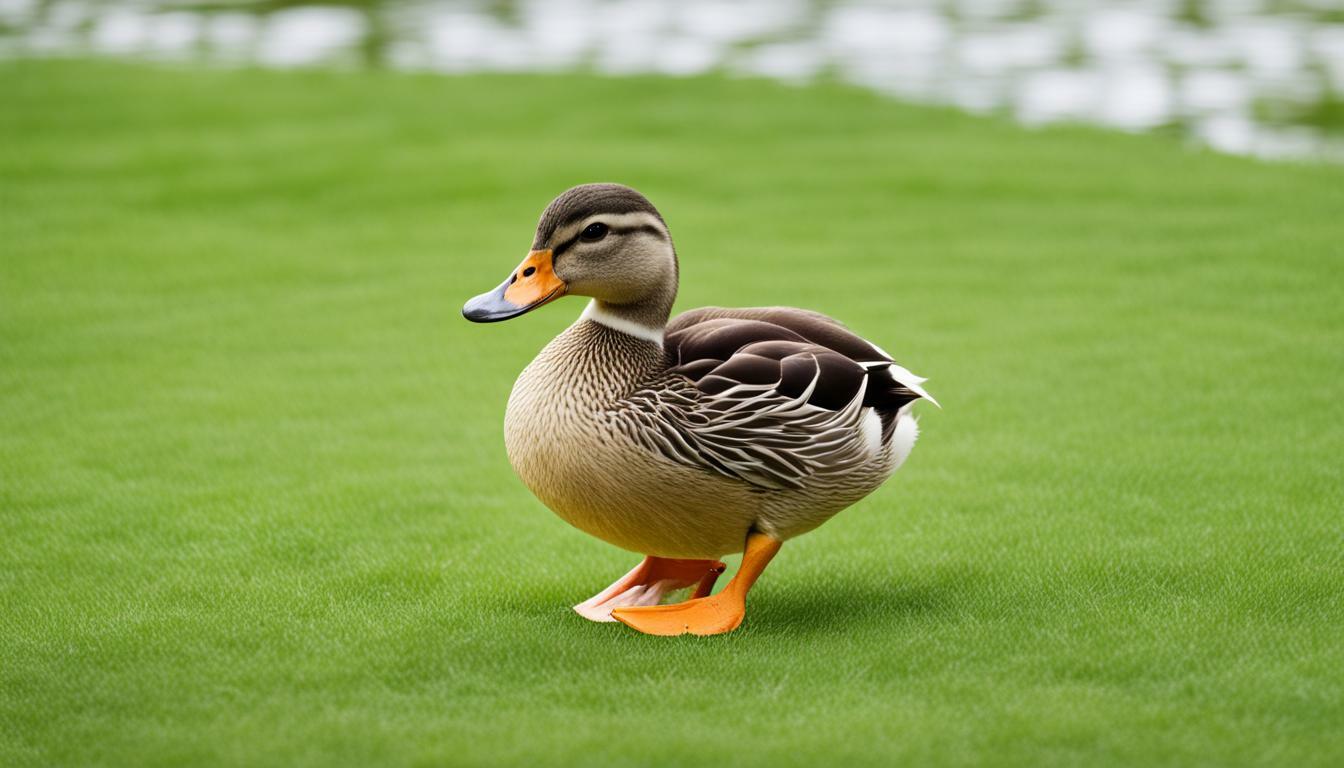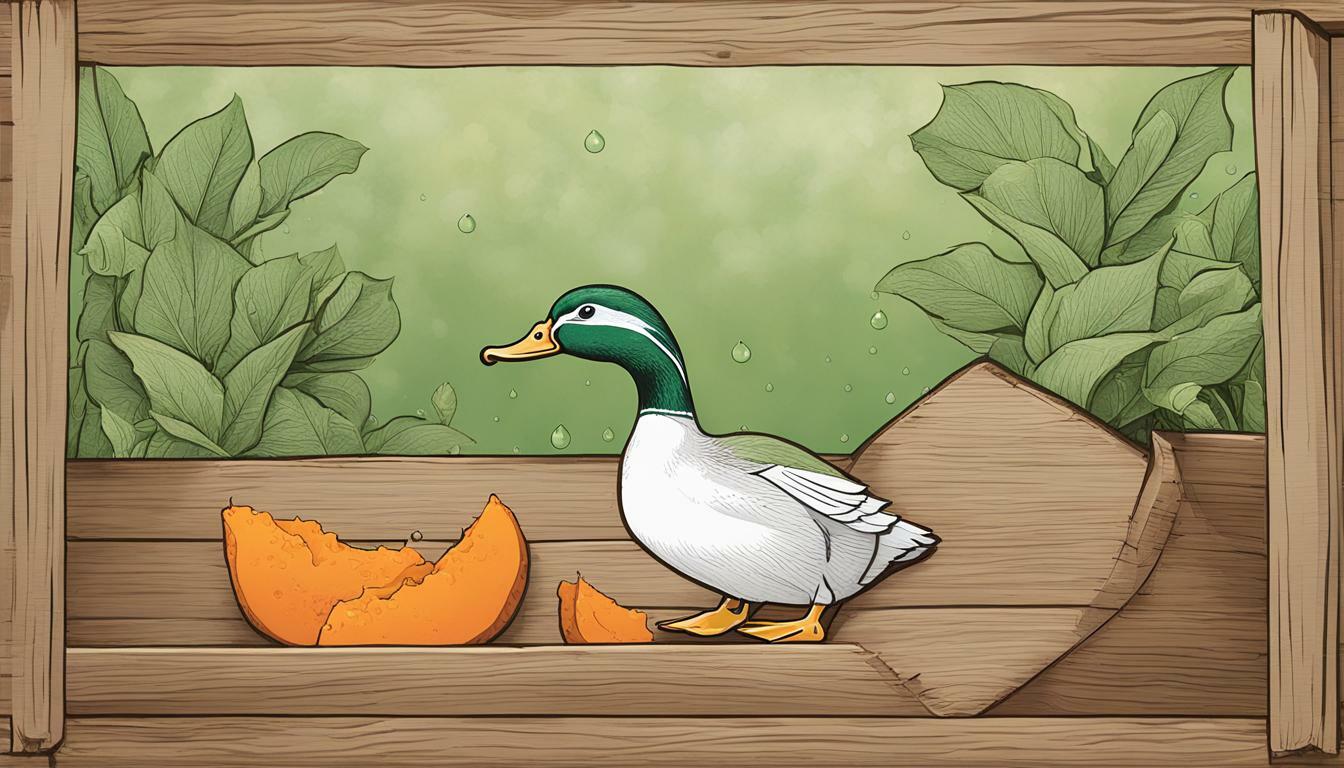Can Ducks Walk Without Bobbing Their Heads? Discover the Facts!

Table of content:
Ducks are a common sight in ponds, lakes, and rivers. As they waddle along the shore or swim in the water, it’s hard not to notice their distinctive head bobbing motion. This unique feature of ducks leads many people to wonder – can ducks actually walk without bobbing their heads up and down?
How Ducks Walk and Why Their Heads Bob
To understand if ducks can walk without head bobbing, it helps to first look at how their body is designed for movement. Ducks have relatively short legs set far back on their bodies, with large feet and webbed toes ideal for swimming. When they walk on land, their sideways gait gives them a characteristic waddle.
Ducks employ a rhythmic, up-and-down pumping motion of their necks as they walk. This motion helps them maintain balance and momentum on land. The head bobbing acts as a counterweight to shift their center of gravity back and forth with each step. It provides stability that their wide, flat bodies need to move effectively on land.
So in short – ducks bob their heads when walking because it allows them to maintain balance and a proper center of gravity. Their body structure essentially necessitates head bobbing for smooth, coordinated movement on land.
Do All Duck Species Bob Their Heads?
There are over 120 different species of ducks in the world. Do they all bob their heads when they walk?
The answer is yes – head bobbing during walking appears to be a universal trait among all duck species. From Mallards to Mandarins, Teals to Wood Ducks, the distinct head bob can be observed regardless of species.
The only exception may be in ducklings just learning to walk – very young ducklings under 3 weeks old may not consistently bob their heads at first. But they quickly pick up the rhythm as they become more stable on their feet.
So in the duck world, the head bob is the norm across the board. Their shared body structure and walking style makes head bobbing inevitable for grown ducks of all types.
What Allows Ducks to Walk Without Bobbing?
While head bobbing is innate in ducks, they are capable of walking without the head pump under certain circumstances.
Ducks can briefly walk without bobbing their heads when they are relaxed and moving very slowly. If they are sauntering rather than taking purposeful steps, their necks may remain still. However, extended walking or bursts of speed inevitably brings the bobbing motion back.
The other scenario in which a duck may not bob its head is when it is concentrating intently on something. A duck searching closely for food in the grass may move forward with its neck stabilized and eyes focused downwards. But this focused stillness only occurs for short durations.
So ducks technically can walk smoothly without head bobbing, but only at very slow speeds or when laser-focused. Brisk walking and their normal gait will always include rhythmic head movements.
When Do Ducklings Start Head Bobbing?
Ducklings are a delight to observe as they take their first wobbly steps. But you may notice they lack the characteristic head bobbing of adult ducks.
Newly hatched ducklings do not start bobbing their heads immediately. At first, they must focus on basic movement and balancing on their skinny little legs. But within 2-3 weeks, ducklings start acquiring more coordinated motor skills, including the head bob.
By 3 weeks old, most ducklings begin consistently pumping their heads up and down as they walk. This timing coincides with the rapid growth of flight feathers, allowing young ducks to regulate balance and momentum for swimming as well.
The head bobbing motion gradually becomes more pronounced and synchronized as ducklings mature. By 6-8 weeks old, the awkward fluffy hatchlings have transformed into agile juvenile ducks that walk and swim with all the distinctive features of adult ducks.
Can Ducks Learn to Walk Smoothly Without Bobbing?
The innate head bobbing of ducks leads some to wonder – can ducks learn to suppress this motion and walk smoothly like other birds?
Unfortunately, it appears that ducks cannot be trained to walk without the head pump for extended periods. Because the motion is instinctive and helps them maintain balance, they have limited ability to consciously counter it.
Ducks may momentarily halt the bobbing if hand-fed treats or given verbal commands. But they inevitably revert back to rhythmic head movements within a few steps once they resume normal walking.
Trying to train a duck not to bob its head would also serve little purpose and could even hinder its balance. For a duck, the energy required to walk without bobbing would not justify abandoning this ingrained mechanism.
So while ducks are intelligent birds, suppressing their natural head bob altogether seems to exceed their behavioral and biomechanical capabilities.
Are There Duck Breeds That Don’t Bob Their Heads?
With over 120 duck breeds, is it possible some naturally lack the distinctive head bob?
Among the diverse array of domestic and wild duck species, no known breeds completely abstain from head bobbing. As waterfowl built for swimming, all ducks share key physical traits that necessitate the motion when moving on land.
That said, certain breeds seem to exhibit less pronounced head pumps than others:
- Call Ducks – These tiny domestic ducks have a reduced bob, possibly because their smaller size requires less motion to regulate balance.
- Muscovy Ducks – A slight upward tilt of the head replaces the typical vertical pump in these unique ducks.
- Stiff-Tailed Ducks – Species like the Ruddy Duck have stiffened tail feathers that may slightly moderate head movement.
But even in these breeds, the head still noticeably bobs to some degree. No duck species has fully overcome the innate tendency to pump their head for stability when walking.
Final Thoughts
In summary, ducks appear designed to bob their heads when they walk based on their physical proportions and center of gravity. While they can move slowly without bobbing for brief periods, the motion is unavoidable if they want to walk efficiently on land. Their distinctive head pump serves an important purpose and cannot be completely trained out of this waterfowl. So the next time you see a duck waddling by, take a moment to admire this unique and innate behavior that helps it stay balanced!
Head bobbing remains an inevitable – and rather endearing – consequence of a duck’s anatomy and movement. Whether mallard, muscovy, or mandarin, these aquatic birds rely on rhythmic head motions to get around on land. Their bobbing heads may look amusing compared to other birds, but reveal the innate grace and agility that allows ducks to thrive both in water and on shore.
Welcome. I’m Adreena Shanum, the proud owner of this website, and I am incredibly passionate about animals, especially poultry. I founded adreenapets.com as a labor of love, stemming from my desire to share my knowledge and experiences with poultry enthusiasts worldwide.




